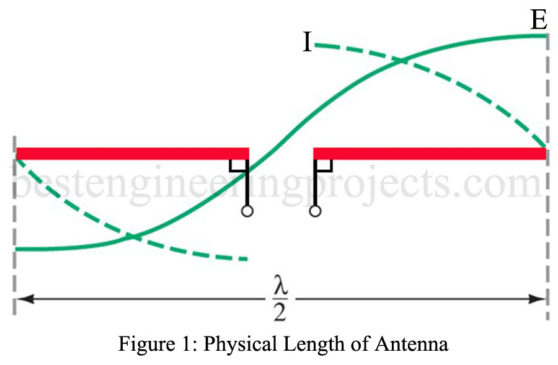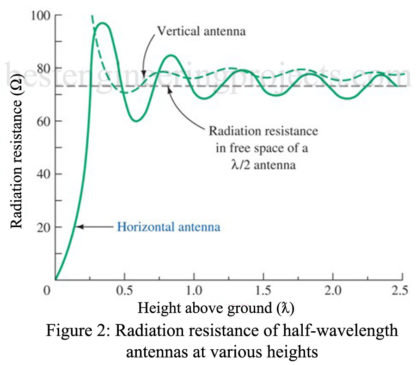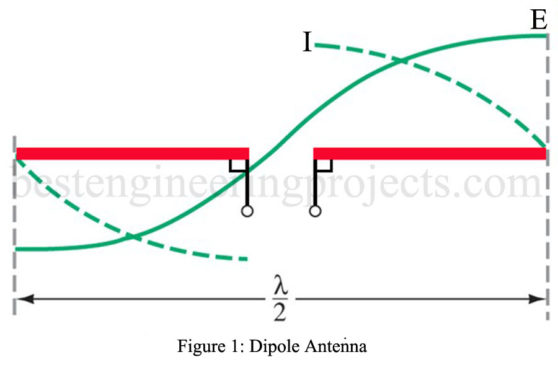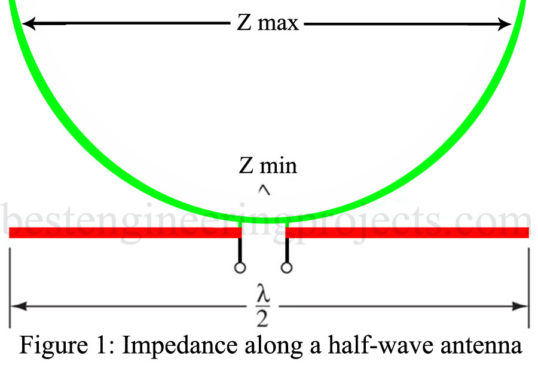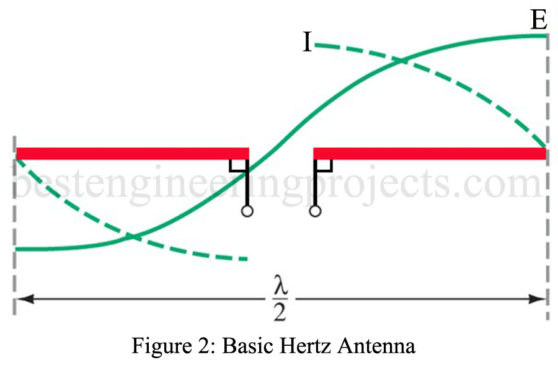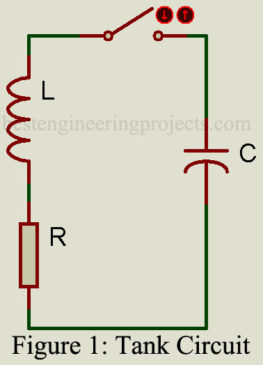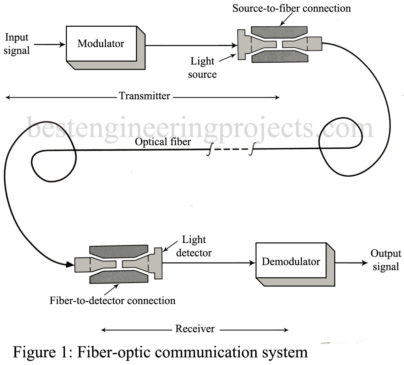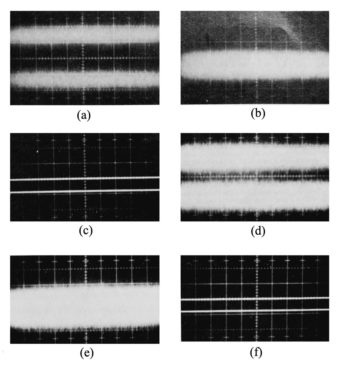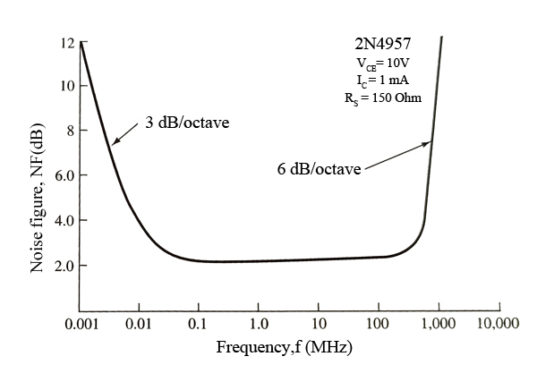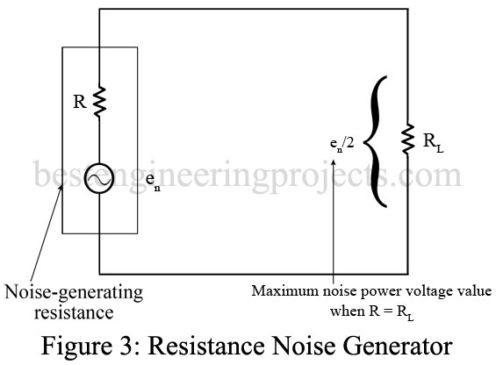What is the physical length of antenna? If an antenna is constructed of very thin wire and is isolated in space, its electrical length corresponds closely to its physical length of antenna. In practice, however, an antenna is never isolated completely from surrounding objects. For example, the antenna will be supported by insulators with a dielectric constant greater than 1. The dielectric constant of air is arbitrarily assigned a numerical value equal to 1. Therefore, the velocity of a wave along a conductor is always slightly less than the velocity…
Read MoreCategory: Electronic Tutorial
Antenna Radiation Resistance
The portion of an antenna’s input impedance that is the result of power radiated into space is called the antenna radiation resistance, Rr. It should be noted that R, is not the resistance of the conductors that form the antenna. It is simply an effective resistance that is related to the power radiated by the antenna. Since a relationship exists between the power radiated by the antenna and the antenna current, radiation resistance can be mathematically defined as the ratio of total power radiated to the square of the effective…
Read MoreHow to Calculate Dipole Antenna Gain
The hertz antenna is also called a dipole antenna. The Hertz antenna has gain concerning the theoretical isotropic radiator. Dipole Antenna gain is different from amplifier gain since feeding 50 W into a dipole does not result in more than 50 W of radiated field energy. It is, instead, a gain relative to a reference antenna. The dipole, therefore, has a gain relative to the isotropic radiator in a certain direction. The Hertz antenna has a 2.15-dB gain (at right angles to the antenna) as compared to an isotropic radiator.…
Read MoreHertz Antenna Impedance
A Hertz Antenna Impedance value may be specified for a half-wave antenna thus constructed. Generally, the impedance at the ends is maximum, while that at the input is minimal. Consequently, the impedance value varies from a minimum value at the generator to a maximum value at the open ends. An impedance curve for the half-wave antenna is shown in Figure 1. Notice that the line has different impedance values for different points along its length. The impedance values for half-wave antennas vary from about at the open ends to at…
Read MoreHertz Antenna Fundamental and Development
Any antenna having a physical length that is the one-half wavelength of the applied frequency is called a Hertz antenna. Hertz antennas are predominately used with frequencies above 2 MHz. It is unlikely that a Hertz antenna will be found in applications below 2 MHz because at these low frequencies this antenna is physically too large. Usually, at frequencies below 2 MHz, a Marconi type of antenna is used. This is a quarter-wavelength antenna with the ground reflection acting as the other quarter wavelength. Development of the Hertz Antenna When…
Read MoreWorking of LC Oscillator
Working of LC Oscillator: The effect of charging the capacitor in Fig. 1 to some voltage potential and then closing the switch results in the waveform shown in Fig. 1. The switch closure starts a current flow as the capacitor begins to discharge through the inductor. The inductor, which resists a change in current flow, causes a gradual sinusoidal current buildup that reaches the maximum when the capacitor is fully discharged. At this point, the potential energy is zero, but since the current flow is maximum, the magnetic field energy…
Read MoreIntroduction and Advantages of Optical Communications
In the article Introduction and Advantages of Optical Communications, we will discuss optical communications and their advantages. Introduction of Optical Communication: Recent advances in the development and manufacture of fiber-optic systems have made them the latest frontier in the field of communications. They are being used for both military and commercial data links and have replaced a lot of copper wire. Their use in telecommunications is extensive. They are also expected to take over much of the long-distance communication traffic now handled by satellite links. A fiber-optic communications system is…
Read MoreElectrical Noise Measurement Technique
Electrical noise measurement has become a very sophisticated process. Specialty electrical/electronics noise measuring instruments that offer many computer-controlled functions are available for thousands of dollars. If you become involved with a large number of measurements, you will become familiar with some of these instruments. In this section, we look at some general methods of noise measurement that can be accomplished with relatively standard laboratory instrumentation. A simple and reliable method of noise measurement is the case where the signal is equal to the noise. At some convenient point in the…
Read MoreNoise Designation and Calculation
In the topic “Noise Designation and Calculation” we will discuss the various topics with proper mathematical equations and examples. The topic we are going to discuss are: Signal to noise ratio Noise Figure Resistor combination effect Reactance Noise effect Noise due to amplifier in a cascade Equivalent noise temperature Equivalent noise resistance Signal-to-Noise Ratio We have thus far dealt with different types of electrical noise without showing how to deal with noise in a practical way. The most fundamental relationship used is known as the signal-to-noise ratio (S/N ratio), which…
Read MoreElectrical Noise | Types of Electrical Noise
Electrical noise may be defined as any undesired voltages or currents that ultimately end up appearing in the receiver output. To the listener, this electrical noise often manifests itself as static. It may only be annoying, such as an occasional burst of static, or continuous and of such amplitude that the desired information is obliterated. Electrical noise signals at their point of origin are generally very small, for example, at the microvolt level. You may be wondering, therefore, why they create so much trouble. Well, a communications receiver is a…
Read More